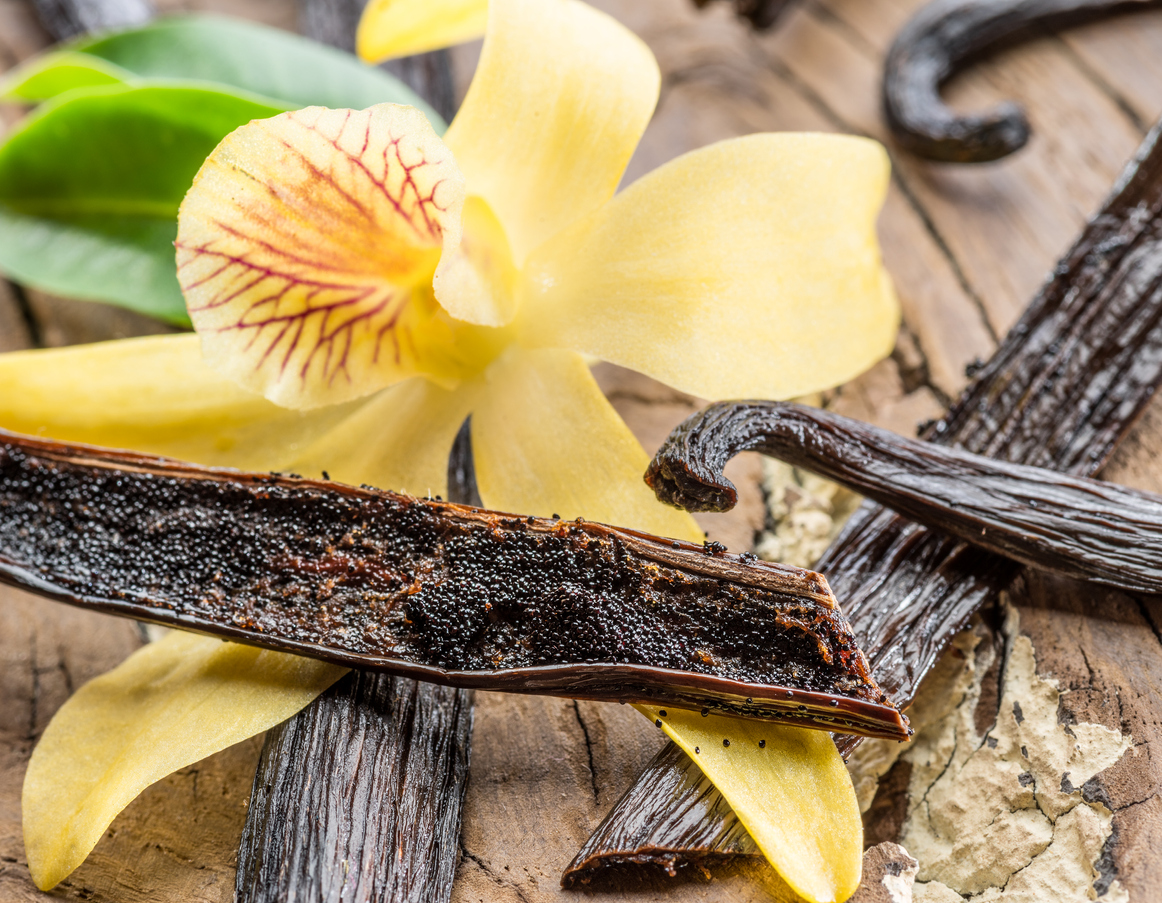Unveiling the World’s Largest Vanilla Producer: Insights into Madagascar’s Dominance in the Industry
Unveiling the World’s Largest Vanilla Producer: Insights into Madagascar’s Dominance in the Industry
Madagascar, the enchanting island nation nestled in the Indian Ocean, holds a secret that has tantalized taste buds and bewitched food lovers worldwide. Brace yourself as we delve into the fascinating world of vanilla – the exotic and aromatic spice that has taken center stage in countless kitchens across the globe. In this captivating blog post, we invite you on an extraordinary journey to unveil Madagascar’s crown jewel: its unrivaled dominance as the world’s largest producer of vanilla. Prepare to be enchanted by tales of ancient traditions, breath-taking landscapes, and discover why this tropical paradise reigns supreme in an industry driven by flavor and allure. Get ready to sink your senses into a fragrant adventure like no other!
Introduction to Vanilla: History and Importance in the Culinary World
Vanilla is a popular flavoring and ingredient that has been used in various cuisines across the world for centuries. It is derived from the vanilla orchid, a flowering plant native to Central America and Mexico. However, the history of vanilla can be traced back to ancient Mesoamerican civilizations, where it was used by the Aztecs and Mayans as a spice and for medicinal purposes.
The Spanish conquistador Hernan Cortes is credited with introducing vanilla to Europe in the early 16th century when he brought it back from Mexico. Vanilla quickly gained popularity in Europe as a luxurious and exotic flavoring, often reserved for royalty and nobility. However, it wasn’t until the 19th century that scientists discovered how to artificially pollinate vanilla orchids, making its cultivation more efficient and widespread.
Today, vanilla production is concentrated in several regions around the world including Madagascar, Indonesia, Papua New Guinea, Uganda, India, Mexico, and Tahiti. Among these countries,Madagascar stands out as the largest producer of vanilla globally with an estimated share of over 80% of the market.
But what makes Madagascar such a dominant force in the global vanilla industry? The answer lies not only in its geographical location but also in its unique climate conditions and agricultural practices.
Madagascar’s tropical climate with distinct wet and dry seasons provides optimal conditions for growing high-quality vanilla beans.
The Rise of Madagascar as the Leading Producer of Vanilla
Madagascar, an island nation located off the eastern coast of Africa, has become synonymous with vanilla production. In fact, it is known as the “vanilla capital of the world” and accounts for over 80% of global vanilla production. So how did this small African country rise to become the leading producer of this highly sought-after spice?
The History of Vanilla in Madagascar:
Vanilla was first introduced to Madagascar in the early 19th century by French colonists who saw the potential for commercial cultivation. However, it wasn’t until around 1880 that vanilla production started on a larger scale with the arrival of Edmond Albius, a 12-year-old slave who discovered a way to hand-pollinate vanilla orchids. This method revolutionized vanilla cultivation and helped Madagascar become a major player in the global market.
Geographical Advantages:
One of the key reasons for Madagascar’s dominance in vanilla production is its ideal geographical location. The island’s tropical climate and rich volcanic soil provide perfect conditions for growing high-quality vanilla beans. It also has a diverse landscape with varying elevations, which allows for different types of orchids to grow and produce unique flavors.
Traditional Farming Methods:
Another factor contributing to Madagascar’s success in producing premium quality vanilla is its traditional farming methods. Unlike other countries where modern agricultural techniques are used, most farmers in Madagascar still rely on age-old practices such as hand-pollination and sun-drying their crops.
Factors Contributing to Madagascar’s Dominance in the Industry
Madagascar has long been known as the world’s largest producer of vanilla, accounting for over 80% of global production. This small island nation off the coast of Africa has dominated the industry for decades and continues to do so despite facing challenges such as natural disasters and political instability. So, what factors contribute to Madagascar’s dominance in the vanilla industry? Let’s take a closer look.
1. Ideal Climate and Soil Conditions
One of the primary reasons for Madagascar’s success in producing high-quality vanilla is its ideal climate and soil conditions. Vanilla plants thrive in warm, humid climates with well-drained soil, which is exactly what Madagascar offers. The country’s tropical climate provides consistent temperatures and ample rainfall throughout the year, creating perfect growing conditions for vanilla plants.
Moreover, Madagascar has a diverse landscape that includes lush rainforests, fertile valleys, and coastal regions which are all suitable for vanilla cultivation. This allows farmers to grow different varieties of vanilla beans based on their specific needs and preferences.
2. Traditional Farming Techniques
Madagascar has a long history of growing vanilla beans using traditional farming techniques passed down through generations. These techniques involve hand-pollination, careful harvesting methods, and sun-curing the beans – all essential steps in producing high-quality vanilla.
Unlike other countries that have adopted more modernized methods such as using machinery or synthetic fertilizers, Malagasy farmers continue to rely on age-old practices that have proven to produce superior quality beans with unique flavors.
– Climate and Geography
Climate and Geography of Madagascar:
Madagascar, the fourth largest island in the world, is located off the southeast coast of Africa in the Indian Ocean. It covers an area of 587,041 square kilometers and is home to a diverse range of landscapes and ecosystems. From lush rainforests to arid deserts, Madagascar’s climate and geography play a crucial role in its dominance as the world’s largest producer of vanilla.
The Climate:
Madagascar has a tropical climate with distinct wet and dry seasons. The country experiences two main seasons – a hot rainy season from November to April and a cooler dry season from May to October. The average temperature ranges between 20°C to 30°C throughout the year, making it ideal for vanilla cultivation.
The southern part of Madagascar is generally hotter and drier than the northern region due to its proximity to the Tropic of Capricorn. This difference in climate allows for different varieties of vanilla beans to be grown on the island.
Geography:
Madagascar’s geography is characterized by highlands, plateaus, coastal plains, and several rivers that cut across the island. The central highlands are where most vanilla production takes place due to their favorable climatic conditions. These areas have rich volcanic soil that provides essential nutrients for growing healthy vanilla plants.
– Agriculture Practices
Madagascar is known for its rich biodiversity, stunning landscapes, and vibrant culture. However, one of the lesser-known aspects of this island nation is its dominance in the global vanilla industry. Madagascar produces over 80% of the world’s vanilla supply, making it the largest producer by a significant margin. This impressive feat raises questions about how Madagascar has achieved such success in this highly competitive market.
One of the key factors behind Madagascar’s dominance in the vanilla industry is its unique agriculture practices. The country’s climate and fertile soil provide ideal conditions for growing vanilla beans, which are derived from orchids native to Mexico but thrive in Madagascar’s tropical environment. Additionally, traditional knowledge and techniques passed down through generations have contributed to the quality and quantity of vanilla produced in Madagascar.
The process of cultivating vanilla starts with hand-pollination of the orchid flowers, a labor-intensive task that requires delicate precision to ensure successful fertilization. After pollination, it takes around nine months for the beans to mature fully. Once ripe, they are carefully harvested by hand and undergo an extensive curing process that can take up to six months.
One crucial aspect of Madagascar’s agriculture practices is their emphasis on sustainable farming methods. Vanilla cultivation plays a vital role in protecting and preserving biodiversity on this ecologically diverse island nation. Farmers use agroforestry techniques where vanilla plants are grown alongside other crops such as coffee or cocoa trees, providing shade and nutrients while also preventing erosion.
– Government Policies
Madagascar’s dominance in the vanilla industry can be accredited to a multitude of factors, one of which is the country’s government policies. For decades, the Malagasy government has implemented various policies aimed at promoting and maintaining its position as the world’s largest producer of vanilla.
The first significant government policy that contributed to Madagascar’s dominance in the vanilla industry was the introduction of a quota system in 1989. This policy set a limit on the amount of vanilla that could be exported from Madagascar each year, effectively controlling supply and demand in the market. By restricting exports, the Malagasy government ensured that prices for their high-quality vanilla remained stable and profitable for farmers. This approach also prevented overproduction and helped maintain quality standards, ensuring that only premium-grade vanilla reached the international market.
Furthermore, in 1996, Madagascar’s government introduced a law requiring all vanilla beans to undergo curing and processing before being exported. This regulation aimed to improve quality control measures by standardizing production methods and preventing unripe or subpar beans from reaching consumers. With this policy in place, Madagascar established itself as a reliable source for top-quality cured vanilla beans globally.
In addition to these regulations, the Malagasy government also implemented programs to support small-scale farmers who make up most of Madagascar’s vanilla producers. These initiatives include providing training on best agricultural practices, access to loans and credit facilities, and technical assistance with harvesting techniques.
Challenges Faced by Madagascar’s Vanilla Industry
Madagascar is the world’s largest producer of vanilla, responsible for over 80% of the global supply. However, the vanilla industry in Madagascar has not been without its challenges. Despite being a lucrative crop for the country’s economy, there are several obstacles that have hindered its growth and development.
1) Natural Disasters: Madagascar is prone to natural disasters such as cyclones, droughts, and floods which can severely damage vanilla plantations. In recent years, these disasters have become more frequent and intense due to climate change, causing significant losses for vanilla farmers.
2) Labor Shortage: Vanilla cultivation requires intensive labor from hand-pollination to harvesting and curing. However, there has been a shortage of skilled labor in Madagascar’s rural areas where most vanilla plantations are located. This has led to increased production costs and slower processing times.
3) High Production Costs: The process of cultivating vanilla is time-consuming and labor-intensive, making it an expensive crop compared to others. Moreover, the cost of inputs such as fertilizers and pesticides has also risen in recent years, putting financial strain on small-scale farmers who make up a significant portion of the industry.
4) Lack of Infrastructure: Many vanilla-producing regions in Madagascar lack basic infrastructure like roads and electricity. This makes transportation difficult and expensive for farmers trying to get their crops to market. As a result, many farmers are forced to sell their produce at lower prices or rely on middlemen who take advantage of their situation.
– Natural Disasters
Madagascar, the fourth largest island in the world, is not only known for its unique wildlife and stunning landscapes but also for being the top producer of vanilla. However, with great production comes great responsibility, and Madagascar faces a constant threat from natural disasters that can potentially disrupt its vanilla industry.
Located in the Indian Ocean off the east coast of Africa, Madagascar experiences a wide range of natural disasters including cyclones, floods, droughts, and wildfires. These disasters not only pose a danger to human lives but also have severe impacts on agriculture – specifically on vanilla production.
One of the most devastating natural disasters in Madagascar is cyclones. These powerful storms bring strong winds and heavy rains which can cause extensive damage to vanilla crops as well as infrastructure such as roads and buildings. In 2017 alone, Cyclone Enawo hit Madagascar causing widespread destruction and leaving many farmers without homes or livelihoods.
Floods are another common occurrence in Madagascar during the rainy season. They can result in soil erosion which affects the quality of soil needed for growing vanilla beans. Flood waters can also damage crops by washing away newly planted seedlings or drowning mature plants. In addition to this, they can contaminate water sources used for irrigation purposes.
Droughts are also a major concern for Madagascar’s vanilla industry. The country relies heavily on agriculture as a source of income and livelihood for millions of people. Droughts lead to water shortages which directly impact crop growth and yield.
– Political Instability
Political instability has long been a defining characteristic of Madagascar’s economic and social landscape. The island nation, situated off the east coast of Africa, has a tumultuous history marked by political upheaval, coups, and civil unrest. This volatility has had significant impacts on various industries in the country, including vanilla production.
One of the major reasons for political instability in Madagascar is its complex colonial legacy. The island was colonized by the French in 1896 and remained under their rule until gaining independence in 1960. However, this transition to self-governance was not smooth, as many years of authoritarian rule followed. It wasn’t until 1992 that Madagascar held its first democratic elections.
Since then, the country has experienced multiple cycles of political instability with frequent changes in leadership through coups or contested elections. This has resulted in an unstable government structure and a lack of continuity in policies and development plans. These factors have made it challenging for businesses to operate efficiently and thrive.
The vanilla industry is no exception to this turmoil. Vanilla farmers rely heavily on government support for infrastructure development, research programs, and market access. The constant shifts in leadership have made it difficult for these initiatives to be implemented consistently and effectively.
Moreover, political instability also affects international trade relationships with other countries that are crucial for Madagascar’s vanilla exports. Sudden policy changes or disruptions can lead to strained diplomatic ties and hinder trade agreements.
– Vanilla Bean Theft and Black Market
The vanilla industry in Madagascar has long been plagued by issues of theft and the black market. Vanilla beans are highly sought after for their unique flavor and aroma, making them a valuable commodity on the global market. However, this high demand has led to rampant theft and illegal trade of vanilla beans in Madagascar.
One of the main reasons for vanilla bean theft is the huge profit potential it offers. In recent years, the price of vanilla beans has skyrocketed, with a kilogram costing up to $600 USD. This makes it an attractive target for thieves looking to make quick money. Moreover, as most farmers in Madagascar live below the poverty line, they see this as an opportunity to earn more income by selling stolen vanilla beans on the black market.
Another issue is that cultivating vanilla beans is a labor-intensive process that requires patience and expertise. It takes around three years for a vanilla vine to produce mature pods, and even then, each pod must be meticulously hand-pollinated. This lengthy process means that there is limited supply compared to the increasing demand for vanilla beans worldwide.
The combination of high profits and limited supply has created an environment where organized crime groups can thrive in stealing and trafficking vanilla beans on the black market. These groups often have connections with corrupt officials who turn a blind eye or even actively participate in these illegal activities.
The impact of this theft and illegal trade goes beyond just financial losses for farmers and legitimate businesses.
Impact of Madagascar’s Vanilla Production on the Global Market
Madagascar is known as the world’s largest producer of vanilla, accounting for over 80% of global production. This small island nation, located off the east coast of Africa, has been dominating the vanilla industry for centuries and continues to play a crucial role in shaping the global market.
The impact of Madagascar’s vanilla production on the global market is immense. It not only affects the prices and availability of vanilla worldwide but also has significant social, economic, and environmental impacts.
Firstly, Madagascar’s dominance in vanilla production has a direct effect on the price of this highly sought-after spice. Due to its large share in global production, any changes in Madagascar’s supply can lead to fluctuations in prices. For instance, when Cyclone Enawo hit Madagascar in 2017 and damaged a significant portion of its vanilla crop, it caused a sharp increase in vanilla prices globally. As a result, consumers had to pay higher prices for products containing vanilla and businesses that rely on this ingredient faced challenges in maintaining profit margins.
Moreover, with most countries importing their vanilla from Madagascar, any issues or disruptions in its production can have a ripple effect on other industries such as food and beverage or cosmetics. This highlights how heavily reliant the global market is on Madagascar’s vanilla production.
The impact also extends beyond just pricing and availability. The booming demand for natural and organic products has led to an increase in demand for pure Madagascan vanilla extract.
–
Madagascar has been dominating the global vanilla industry for decades, supplying over 80% of the world’s vanilla. This small island nation, located off the southeast coast of Africa, has become synonymous with high-quality and flavorful vanilla beans. But what makes Madagascar the world’s largest producer of this coveted spice? In this section, we will delve deeper into the factors that have contributed to Madagascar’s dominance in the vanilla industry.
1. Ideal Climate and Soil Conditions
Madagascar’s tropical climate and fertile soil provide the perfect environment for growing vanilla plants. The country’s location near the equator ensures consistent temperatures between 20-30 degrees Celsius, which is optimal for vanilla cultivation. The island also receives plenty of rainfall, creating a humid environment that is essential for growth.
Moreover, Madagascar’s volcanic soil is rich in nutrients and minerals necessary for producing high-quality vanilla beans. These ideal conditions allow farmers to grow healthy and robust vanilla vines, resulting in a bountiful harvest year after year.
2. Traditional Farming Methods
The production of vanilla in Madagascar is mainly done by small-scale farmers who use traditional methods passed down through generations. Unlike other countries where large plantations are common, most farms in Madagascar are family-owned and operated on a small scale.
These traditional farming practices involve hand-pollinating each flower individually, manually harvesting ripe beans at just the right time, and curing them using natural fermentation techniques. These methods require patience and expertise but result in superior quality beans with intense flavor profiles.








Comments are closed.